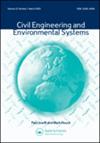关于maxEnt的一些思考
IF 1.1
3区 工程技术
Q3 ENGINEERING, CIVIL
引用次数: 0
摘要
给出了Jaynes最大熵框架maxEnt的两种不同应用。目的是展示maxEnt如何激发有关maxEnt模型的形式结构与决定目标函数和约束时出现的实际(可能是政治)考虑之间关系的问题。虽然这些点不会导致计算复杂的模型,但它们确实提出了关于模型形式与使用模型的环境之间关系的重要问题。第一个例子来自城市和交通规划。使用maxEnt来推导出行分配,即重力模型,带来了清晰的好处,但也提出了一个具有政策含义的重要问题:出行成本应该正确地成为模型中的行为约束,还是应该被视为一种输出?讨论了政策影响。第二种情况最初是由人员选择引起的,它提出了一种可能性,即我们并不总是清楚应该优化什么maxEnt,我们应该对什么保持最低限度的歧视?这个问题相当普遍,水资源分配方案的选择说明了这一点。本文章由计算机程序翻译,如有差异,请以英文原文为准。
Some reflections on maxEnt
ABSTRACT Two different applications of Jaynes’ maximum entropy framework, maxEnt, are given. The purpose is to show how maxEnt stimulates questions about the relations between the formal structure of the maxEnt model and the practical, possibly political, considerations which arise when deciding the objective function and the constraints. While these points do not lead to computationally complicated models they do raise important questions about the relationship between model form and the environment in which it is used. The first example is from urban and transportation planning. The use of maxEnt to derive the allocation of trips, the gravity model, brought benefits of clarity but also raised an important question with policy implications: should journey cost rightly be a behavioural constraint in the model or should it be considered an output? The policy implications are discussed. The second case was initially stimulated by personnel selection and raises the possibility that it is not always clear what maxEnt should be optimising, what should we be minimally discriminating about? The issue is quite general and is illustrated by the choice of a scheme for water resource allocation.
求助全文
通过发布文献求助,成功后即可免费获取论文全文。
去求助
来源期刊

Civil Engineering and Environmental Systems
工程技术-工程:土木
CiteScore
3.30
自引率
16.70%
发文量
10
审稿时长
>12 weeks
期刊介绍:
Civil Engineering and Environmental Systems is devoted to the advancement of systems thinking and systems techniques throughout systems engineering, environmental engineering decision-making, and engineering management. We do this by publishing the practical applications and developments of "hard" and "soft" systems techniques and thinking.
Submissions that allow for better analysis of civil engineering and environmental systems might look at:
-Civil Engineering optimization
-Risk assessment in engineering
-Civil engineering decision analysis
-System identification in engineering
-Civil engineering numerical simulation
-Uncertainty modelling in engineering
-Qualitative modelling of complex engineering systems
 求助内容:
求助内容: 应助结果提醒方式:
应助结果提醒方式:


